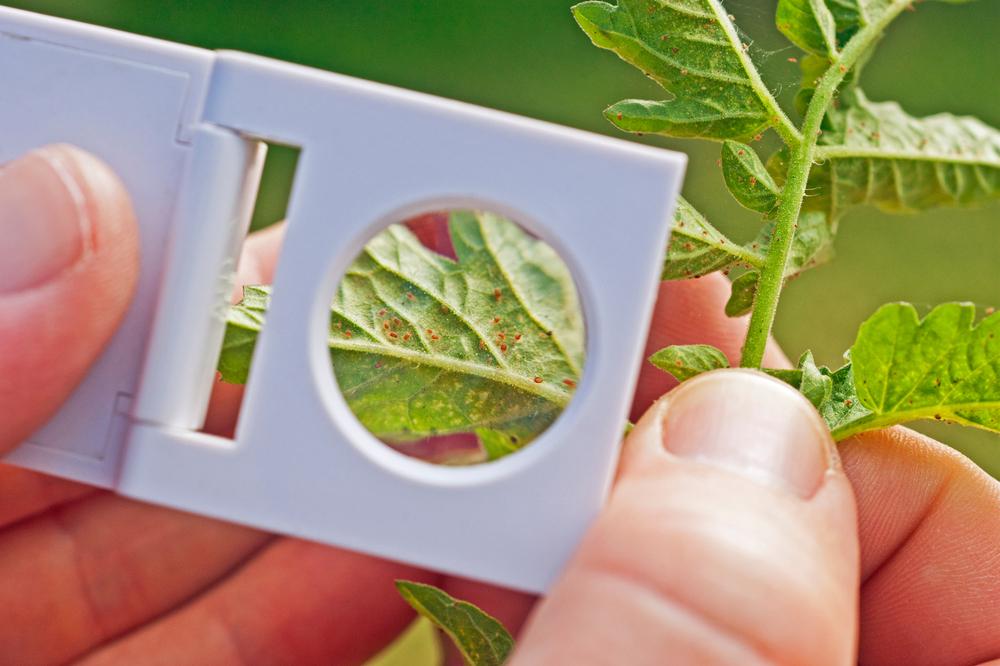Nobody loves a drought. Nobody that is, except spider mites. I have it on good authority that spider mites are a serious problem in our area right now, draining the life juices from so many of the plants we value: lawns, trees, shrubs, flowers, fruits and vegetables.
With our busy lives that always seem to get even busier, spider mites can get out of control before we realize there’s anything wrong.
So what does this mean for our gardens?
It means we need to work harder to protect the investment we’ve made in our landscapes and pay more attention to symptoms these nasty and unwelcome pests create. That’s where my friend and Tagawa colleague Linda comes in.

Linda is part of our excellent crew of Garden Advisors at Dick’s Corner. I asked her recently if there is a particular challenge showing up in Colorado gardens now. Her response: “the drought.” She says the damage from our on-going drought is worse than she’s ever seen it in her many years at Tagawas. But she was also quick to add that a little T.L.C. can go a long way towards reducing some of the problems.
Linda’s current garden enemy #1: spider mites
Spider mites love, love, love dry heat! Linda says they’re in spider-mite heaven when the weather is consistently hot and dry, as it has been so often these past weeks of late spring and early summer.
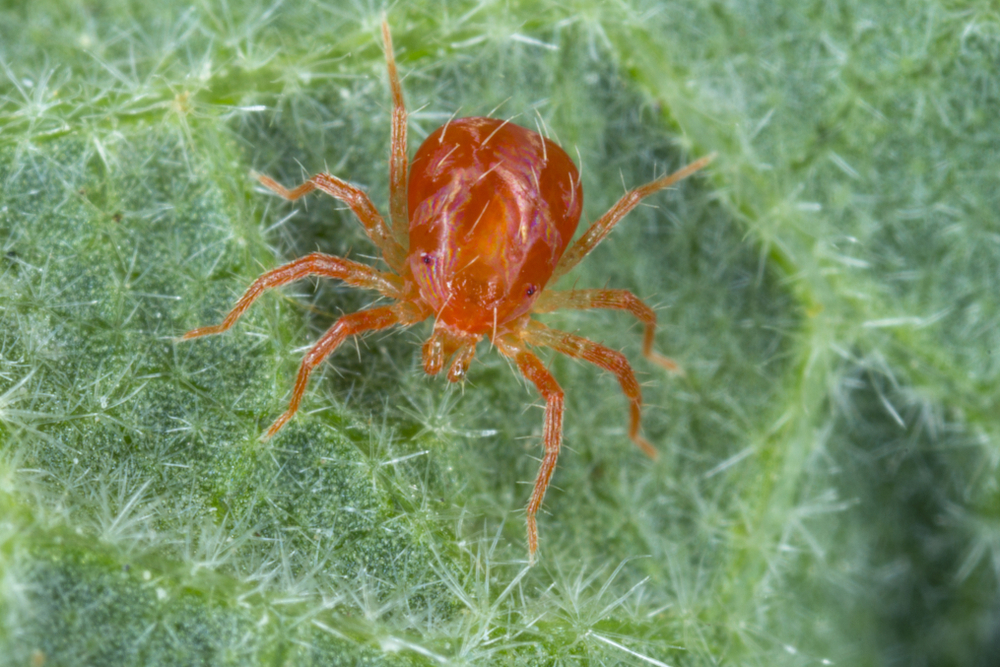
Spider mites are tiny little critters, as the picture at the top of this blog indicates. Different varieties of spider mites in Colorado can be red, brown, yellow or green, and may change color over the course of the summer. When hot dry conditions draw them in, they can suck the life out of a whole assortment of plants before you can say “arachnid!” Spider mites are in the arachnid family, but aren’t true spiders. Because they’re not insects, ordinary insecticides generally don’t kill them. What’s worse, using insecticides can make matters much worse by killing beneficial insects that prey on the spider mites.
But there’s good news when it comes to fighting back against these pests. With some action on the gardener’s part, no pesticides are needed! As much as spider mites love hot, dry conditions, they absolutely detest moisture! So to keep them in check? Raise the humidity!
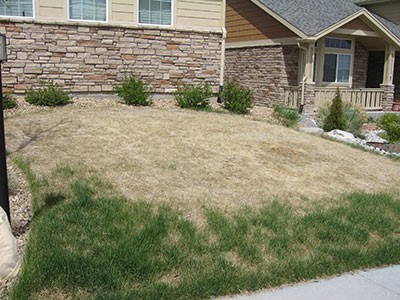
Lawns exposed to intense afternoon sun, especially those growing on a slope or hillside, seem to be a favorite target of one particular variety of spider mites. The slope can make it hard for irrigation water to soak in, which stresses the plants and makes them even more vulnerable to all kinds of problems in addition to the mites.
Watering on a soak-and-cycle approach might help. Water once in the cool of the morning or evening, let it soak in, then water again a bit later. Getting that water down deep into the soil will help definitely help the grass plants, but it can also raise the humidity over these troubled areas in a lawn. Deep core aeration during the cool days of spring and fall (never in the heat of summer!) can also help by creating plug holes where the water can drain down into the soil.
Spider mites will gladly attack flowers and veggies, too!
Spider mites find tender green growth irresistible! This is where you need to become a gardening detective and sharpen your skills of observation.
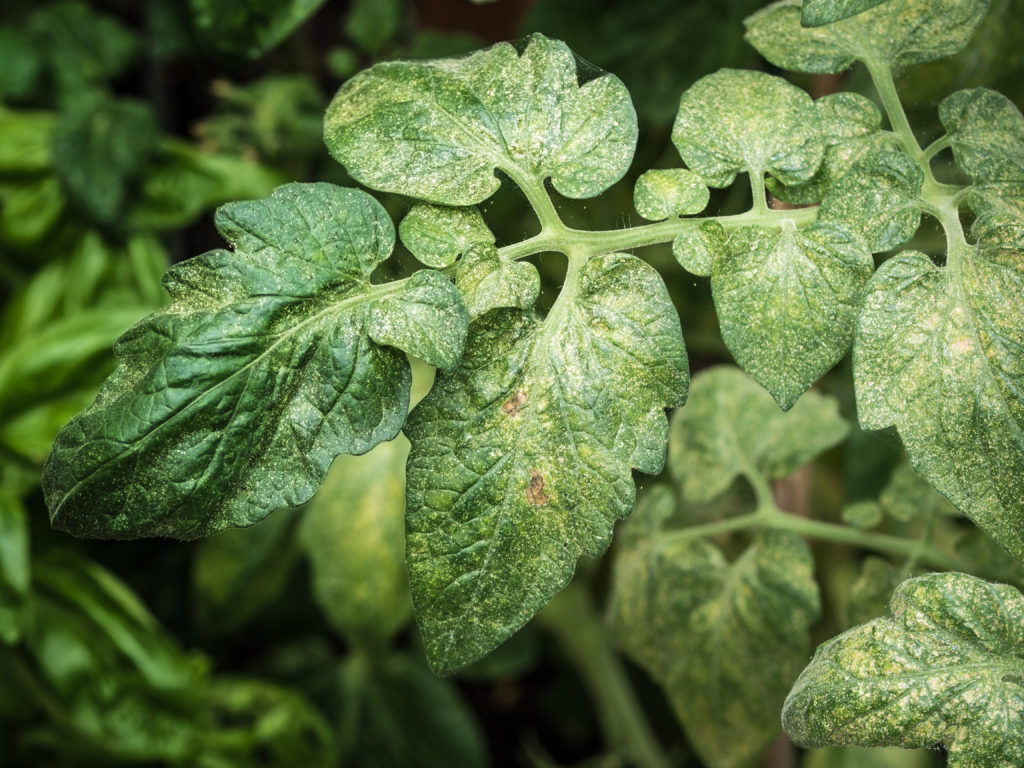
Foliage attacked by spider mites looks mottled, speckled and faded. The damage on the tomato leaves shown above is typical of the appearance of an infestation by another type of spider mite. This symptom is often confused with a disease, but a close inspection can reveal that mites are the real problem.
In heavy numbers, spider mites also create webbing that can make it obvious they’re feeding on your plants.

We can use tthe presence of that webbing against this pest. Even if the tiny mites aren’t readily visible, moisture on the plants makes that webbing stand out, virtually impossible to miss by a gardener with a sharp eye. Just don’t mistake spider mite webs for webs of actual spiders, which (like ’em or not) are a gardener’s friend.
So how best to fight back?
With spider mites (and aphids, too!), a strong jet of water is your best weapon. Hosing down the affected plants not only raises the surrounding humidity, it knocks the mites to the ground and interrupts their life cycle by washing away their eggs. Just make sure the spray is forceful enough to deliver a good blast of water without damaging the plant’s foliage or flowers. Be sure to spray both the tops and bottoms of the foliage so as few as possible of the mites and their eggs are left.
As long as we have extended periods of hot dry weather, we’ll need to be on the lookout for signs of a spider mite infestation.
A few more tips from Linda to push back against the drought
While you’re keeping an eye out for spider mites, look for signs of drought stress in other areas of your garden, too. After extended dry periods last fall, over the winter and into spring, a lot of plants are struggling. As Linda puts it, “Dry air, dry soil and dry roots.” Bottom line: a lot of our gardens are dealing with seriously, often damaging and sometimes deadly drought stress.
That drought stress can show up as sparse growth on deciduous trees or shrubs… the plants that drop their leaves every fall. Improve your watering routine for those plants, or risk having them look like this before too long.
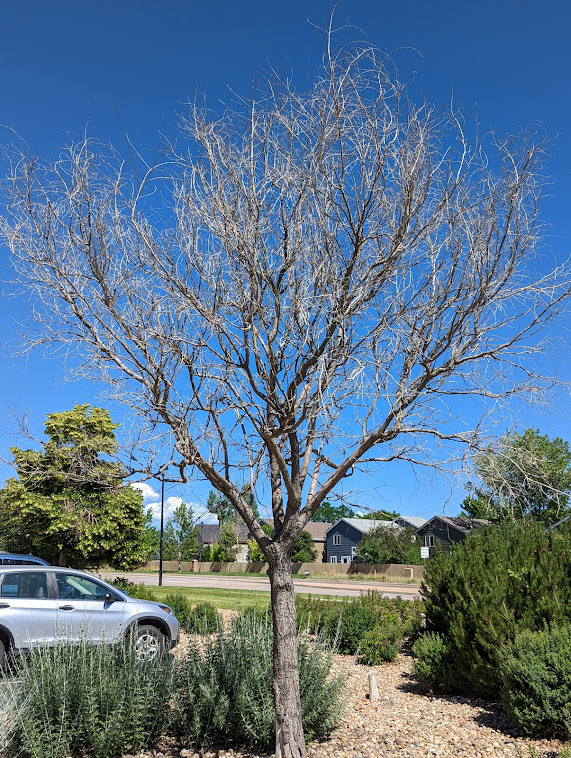
Conifers, the trees and shrubs with needles, can easily show different types of drought stress, too. Insects can cause brown needles, too, so it’s always good to ask for help to identify the cause of the problem
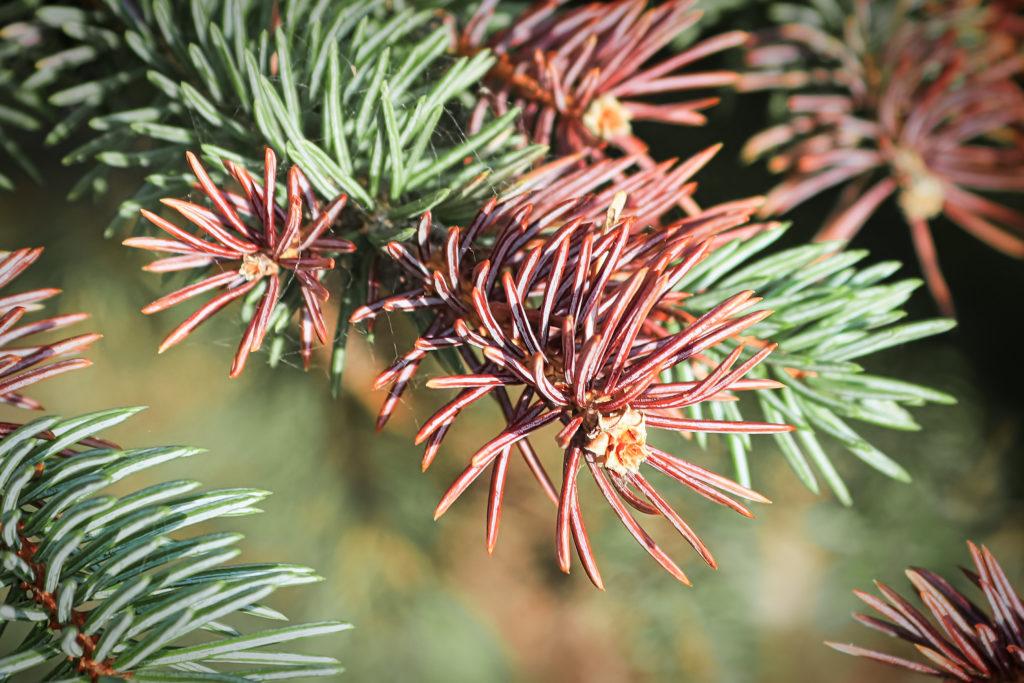
Remember that the water-absorbing feeder roots of trees are at the edge of the root ball on newer plants, not right up against the trunk. On more established trees that have been in the ground a few years, water should be applied at the “drip line,” just below the outer-most point of the branches.
Check the soil moisture with a Tagawa’s moisture meter or by inserting a trowel or a long screwdriver into the soil. If it’s hard to push the trowel or screwdriver several inches into the soil, the ground is definitely very dry.
And as the weather continues hot and dry as predicted…
…more plants will show signs of drought stress if they don’t get some extra T.L.C. Water deeply, so you know moisture is getting down to the bottom of the roots of both new plants and especially valued older plants as well. That will help keep all of the roots healthy and vigorous. Watering for shorter periods of time can encourage roots of most all plants to grow closer to the surface of the soil, where they’re especially vulnerable to drought.
Dick’s Corner is your go-to if you need help!
Tagawa Gardens’ Advisors are at the ready to help you and your garden make it through another hot, dry summer. We encourage you to use your smartphones to take pictures of specific plants that may be struggling. Fresh, tightly-bagged cuttings from plants showing problems can be a great help in diagnosing the issue and offering help.
Looking for additional reading material this weekend? Our friends at CSU Extension have two great resources that we think you’ll find helpful – a spider mites fact sheet and more information on clover & other mites in turf grass!
